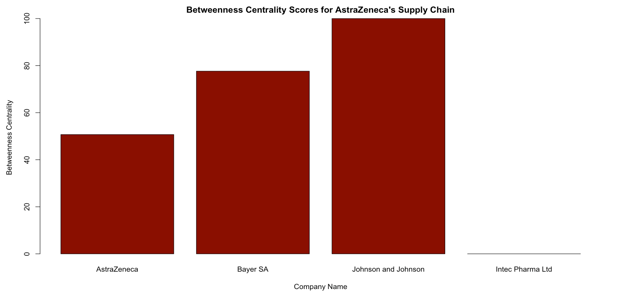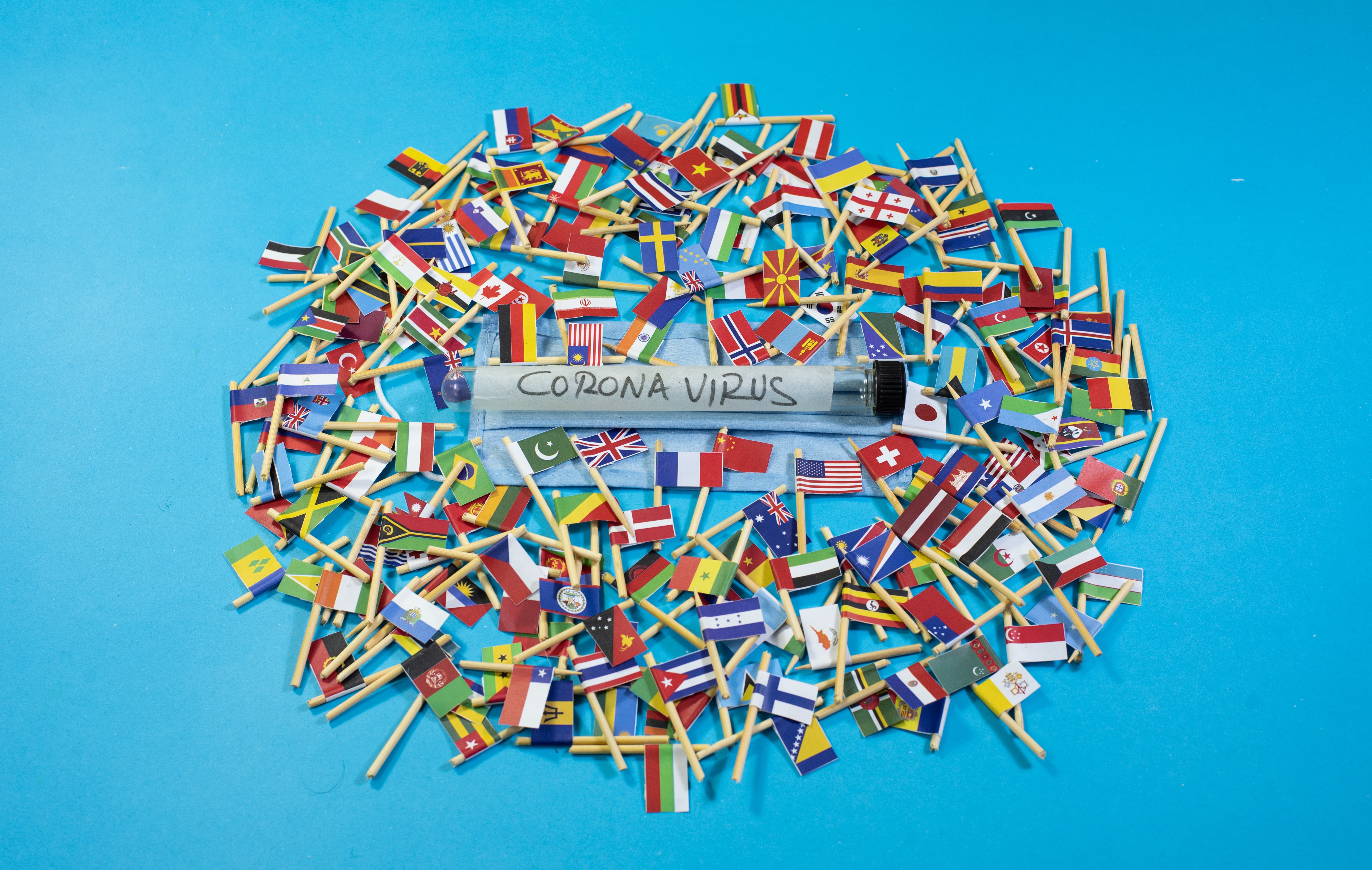AstraZeneca Supply Chain: Will it beat Pfizer in Global Coverage?

Summary
- The Pfizer/BioNtech vaccine has beaten its competitors to market; however, questions still remain on its efficient worldwide distribution
- The Oxford/AstraZeneca vaccine has announced an efficacy rate of 70% and pledged to distribute 64% of its vaccine doses to developing countries
- Analysing AstraZeneca’s supply chain reveals many players are set to gain as it is unlikely to forge new partnerships when moving this quickly
- We found potential partners to include: Ocera Therapeutics Inc, Bayer SA, Johnson and Johnson, Intec Pharma Ltd and ATLAS
The race for which COVID-19 vaccine will reach the market first has been completed. The Pfizer/BioNtech vaccine has claimed this prize and has already started distribution to the United Kingdom and Canada after clearing regional safety and efficacy protocols. Undoubtedly this is a great first step in ending the COVID-19 pandemic, however many questions still remain over how the vaccine will be distributed globally. The obvious challenge includes the requirement for the vaccine to be stored at -70°C, which can prove to be difficult for developing countries to administer due to shortcomings in medical infrastructure. Furthermore, Pfizer has not entered the COVAX agreement, which would have pledged an equitable distribution of the vaccine to developing countries. In addition to this, there are reports of over 80% of the doses already secured by Australia, Canada, the EU, UK and the US.
In the background of the uncertainty over global distribution, the Oxford/AstraZeneca vaccine has announced an efficacy of 70% and is awaiting final safety protocols to be cleared. The advantages of the AstraZeneca vaccine is that it is a part of the COVAX agreement and has the characteristics of vaccines that have been previously administered in developing countries such as storage at refrigerator temperatures, with a shelf life of 6 months. AstraZeneca has pledged to distribute 64% of its vaccine at cost to developing countries. In this post, we will analyse the differences between the distribution channels of both the Pfizer/BioNtech and Oxford/AstraZeneca vaccines and determine the winners and losers from AstraZeneca’s gains.
AstraZeneca’s Financial Forecasts
Underlying revenue strength and diversification across the portfolio leaves AstraZeneca on track to deliver financial gains for both FY2020 and FY2021. Financial analysts are forecasting in the short term, earnings per share (EPS) of $5.46 and 9% sales growth and 19% EPS growth over the next 5 years, driven by strength and diversification across the portfolio. AstraZeneca has the highest sales and EPS growth within EU biopharma over 2020-25, with the shift to specialty care driving underlying margin expansion. A continued drag from COVID-19 represents a downside risk to product sales forecasts, but the successful development of the vaccine could increase 2021 earnings by 30%. Analysts also expect the vaccine will be an important part of the solution, with manufacturing being straightforward and low-cost, the vaccine sold at cost, and a total manufacturing capacity of greater than 3 billion doses in 2021. The rotation out of momentum, pound sterling strength, and deterioration in vaccine sentiment has created a buying opportunity heading into a positive pipeline and earnings risk set-up in 2021.
According to the insightful research by Inferess , the stock performances of related companies can help forecast the stock performance of a target company. If a company’s supply chain players are doing well, then some amount of that positive performance should be translated up and down the supply chain. Therefore, by exploring AstraZeneca’s supply chain to the extended tiers there are opportunities to glean alpha.
We mapped AstraZeneca’s supply chain network to the first degree using Inferess’ global supply chain data. You can find AstraZeneca’s network map below:
Figure 1: AstraZeneca’s supply chain network to the first degree
We then geocoded these companies to see where they were situated, and the results of the first-degree connections can be viewed below:
Figure 2: Locations of AstraZeneca’s first-degree network
As you can see from the map the first-degree connections are largely located in the US and UK.
Subsequently, we mapped out and geocoded the second-degree connections and found the following results:
Figure 3: AstraZeneca’s supply chain network to the second-degree
Figure 4: Locations of AstraZeneca’s second-degree network
As expected, the expansion to the second-degree supply chain connections has increased the geographic coverage of AstraZeneca’s supply chain to also include: Southern Africa, South Asia, East Asia, South America, Middle East and Eastern Europe. Next, we took a closer look at the companies that will be profiting from AstraZeneca’s gains in these regions:
Potential Companies That Can Partner With AstraZeneca In Developing Countries
|
Name of Company Predicted to Partner with Pfizer |
Region Covered |
|
Ocera Therapeutics Inc |
South Asia |
|
Bayer SA |
South America |
|
Johnson and Johnson |
Southern Africa |
|
Intec Pharma Ltd |
Middle East |
|
ATLAS |
Eastern Europe |
In addition, to further strengthen our hypothesis we calculated the Betweenness Centrality measure of these companies. Betweenness measures whether a company is a bottleneck to creating value, with high customer and supplier power. Most customers have to buy from this company, and most suppliers have to sell to this company – which gives the company both customer and supplier power. A high betweenness score indicates that the company has a high degree of influence in AstraZeneca’s supply chain and vice-versa.
Next, we plotted the betweenness centrality scores for these companies in addition to AstraZeneca’s for context and this is displayed below.

Figure 5: Betweenness Centrality Scores for AstraZeneca's Supply Chain
In the Middle East, Intec Pharma Ltd is an influential player in AstraZeneca’s supply chain as it is a supplier to Amneal Pharmaceuticals which directly supplies AstraZeneca. Intec Pharma is a clinical-stage biopharmaceutical company focused on developing and delivering drugs. It has a drug delivery system that is designed to improve the efficacy and safety of existing drugs in development. The betweenness score for Intec Pharma is in the high-range which indicates authority and dominance in the region.
In Southern Africa, Johnson and Johnson (J&J) is a mammoth player in AstraZeneca’s supply chain. J&J is a customer of two key suppliers to AstraZeneca- SELLAS and OncoMed pharmaceuticals. It also has the production capacity of up to 300 million doses, which AstraZeneca can leverage to expand the distribution of its vaccine to the Southern African region. In addition, it has the highest betweenness score amongst the potential partners, which indicates how pivotal J&J is to the supply chain.
In South America, Bayer SA is a powerful player in AstraZeneca’s supply chain. Bayer SA is the South American distributor of one of the largest pharmaceutical companies in the world. Expectedly, its betweenness score is among the highest in the world which indicates the high degree of importance this company has in the supply chain. By leveraging this relationship, AstraZeneca can expand its coverage to include the South American region
In South Asia, Ocera Therapeutics Inc, which was recently acquired by Mallinckrodt, is a clinical-stage biopharmaceutical company focused on the development and commercialization of hyper ammonia medication. The betweenness score for Mallinckrodt is in the high range and therefore by default Ocera possesses a high degree of importance in the supply chain. If AstraZeneca leverages this relationship it can expand its coverage to also include the Indian subcontinent.
Unlike Pfizer, AstraZeneca has a distribution network to Eastern Europe via ATLAS. ATLAS is a distributor of pharmaceutical products for the region. Although it has a lower betweenness score, the distribution network it possesses for the region could extend the AstraZeneca vaccines reach to also include the Eastern European.
Conclusion
In the fight against COVID-19, the global coverage of vaccine deployment is paramount in success. Unlike the Pfizer/BioNtech vaccine, the Oxford/AstraZeneca vaccine offers clear advantages in both the physical properties of the vaccine and greater distribution scope to developing countries. Furthermore, its inclusion in the COVAX agreement solidifies its commitment to equitable vaccine distribution. We have highlighted the key players in the supply chain that will play a crucial role in deploying COVAX ambitions. With multiple vaccines in the market and global coverage, we can remain optimistic for a brighter 2021.
Disclosure: Investors are always reminded that before making any investment, you should do your own proper due diligence on any name directly or indirectly mentioned in this article. Investors should also consider seeking advice from a broker or financial adviser before making any investment decisions. Any material in this article should be considered general information, and not relied on as a formal investment recommendation.
Want to learn more? Contact us to book a free demo and consultation



